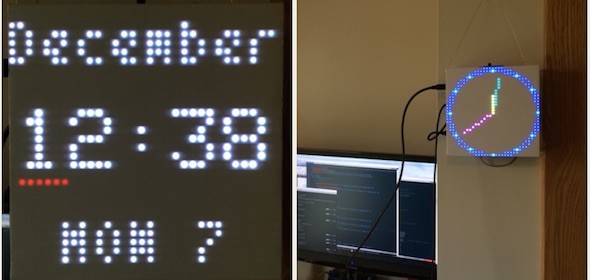RGB LED matrix clock with IR control

Sam Miller and Craig Andres designed a wall-mounted RGB LED matrix clock as their final project for the ECE 4760 course on Designing with Microcontrollers at Cornell. The clock consists of a 32×32 RGB LED matrix, which is controlled using the PIC32MX250F128B microcontroller. The clock also features stopwatch operation and alarm that can be customized through an IR remote. The clock also connects to a PC through a serial interface to synchronize the time with the RTC running on the PC. They write, Our project runs off of a PIC32MX250F128B microcontroller, which handles all the controls and processing of data for the
Read more

